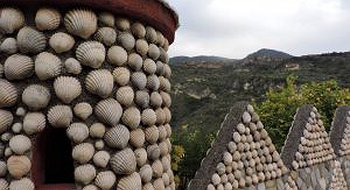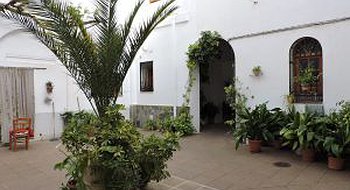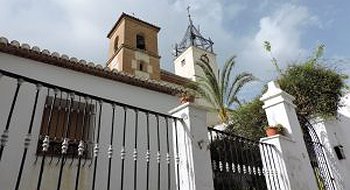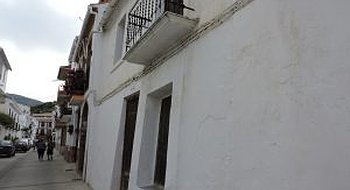Albuñuelas is a municipality located in the depression of the same name, to the southwest of the Lecrín Valley. Its name, of Arabic origin, means "land of vineyards" and denotes personality and tradition.
Situated on the left bank of the river of the Albuñuelas, or "Holy River", so called because of its permanent flow throughout the year, this village is the largest in our region thanks to its 140 km2 full of mountains and history. The wide riverbed of the river has carved out a beautiful valley over time and shaped the Barranco Luna, which runs parallel to this river and finally joins it in Saleres. This impressive gorge, some 700 metres high, offers a thrilling route in which the autochthonous flora, the fossils preserved in the rocks and the gullies created by the passage of the water, leave no one indifferent.
This village rose from the ashes like a phoenix after one of the most tragic episodes in the history of the Lecrin Valley. On 25 December 1884, Christmas Day, an earthquake of great magnitude caused chaos and misfortune among the villagers. The earth shook and took the lives of 104 people, leaving around 500 injured.
National and international appeals for help were made, and King Alfonso XII also showed his support. Many provinces provided the means and resources for the reconstruction of the town, which occupies a well-deserved and recognised place in many of the streets named in their honour. The upper quarter and the church were the most affected. Proof of this are the crooked houses along Estación street, as well as the tower of the old parish church, which had to be rebuilt after the earthquake.
Walking through Albuñuelas the visitor can soak up the remnants of its history through its washing places, its old mills and viewpoints (as is the case of the Havana viewpoint, a fantastic balcony overlooking the depression from which you can see its fields full of crops and the famous "Cuevas de los Moros" dug into the mountain). The tower of Tío Bayo, from the 14th century, shows the Nasrid past of Albuñuelas, a past marked by the dominion of a dynasty that came to an end with King Boabdil.
Last but not least, this village owes much to its people. To Rita, who opens the doors of the church of El Salvador welcoming the pilgrim and anyone who wants to discover its interior; to Paco, who after more than 40 years working and decorating with great patience his house, has given rise to one of the most amazing and unique corners of this village: the Casa de las Conchas; and to all those who welcome with joy and warmth to the people who visit their town.
If you want to visit the Lecrín Valley to get to know these wonderful places, we have a wide variety of accommodation, beautiful rural houses and hotels to choose from; to eat there are different restaurants to choose from, and if you are looking for something different our active tourism companies offer you all kinds of activities and sensations. We are the Association of Rural Tourism of the Lecrín Valley. www.turismovalledelecrin.com.
GO TO BLOG







